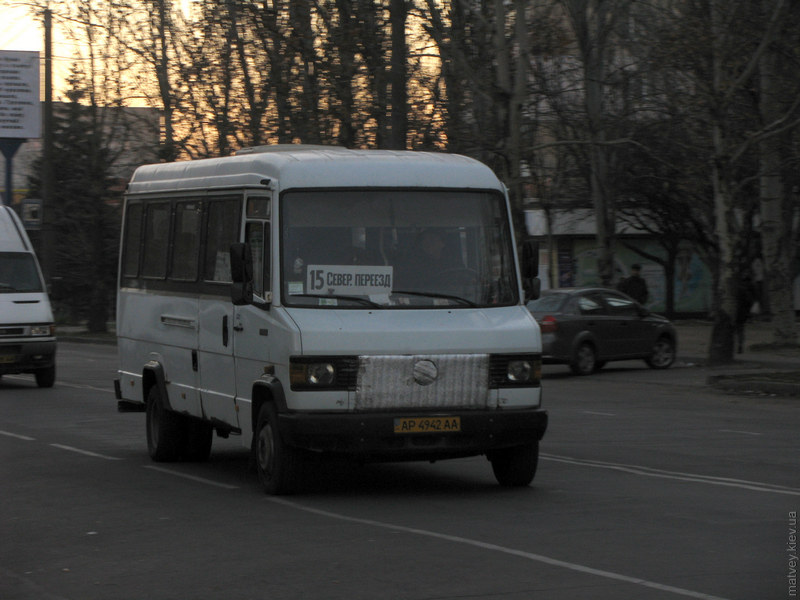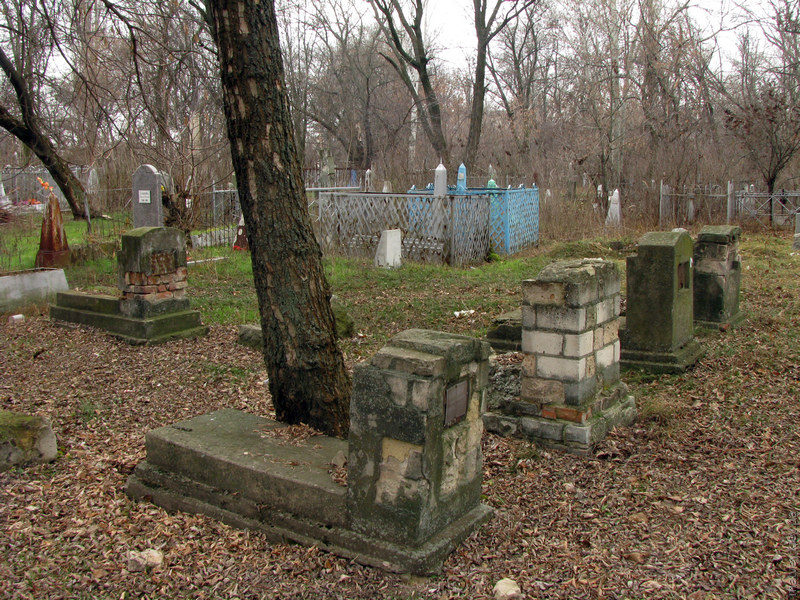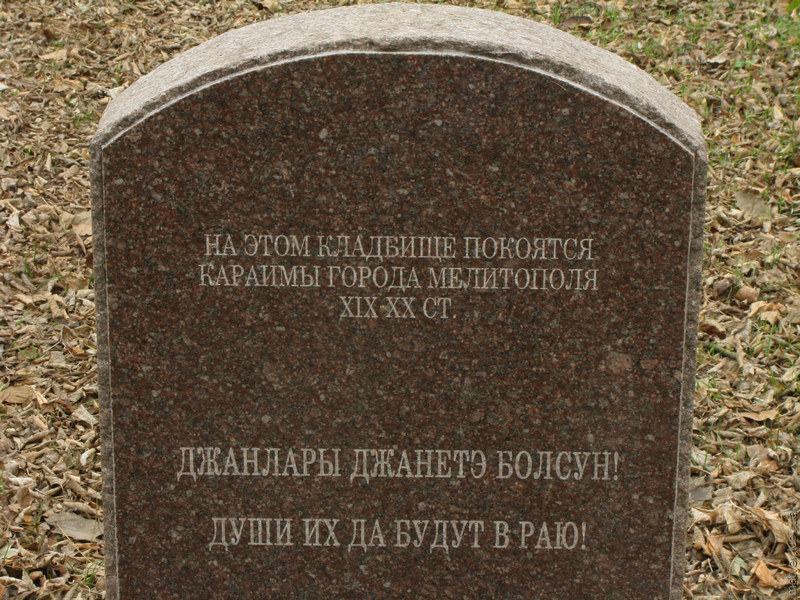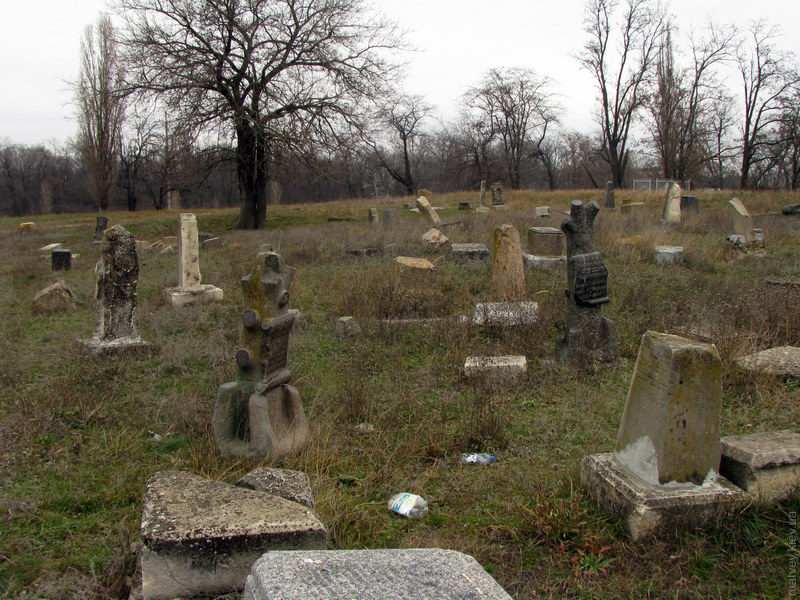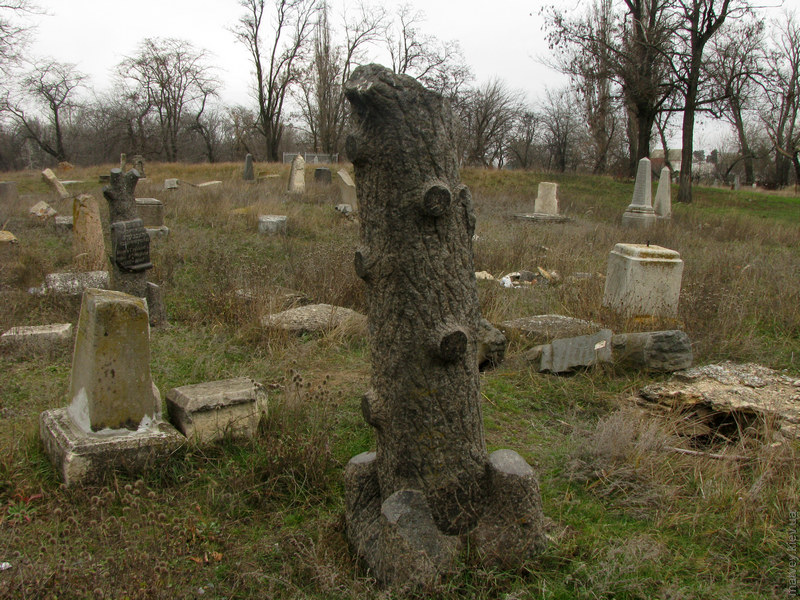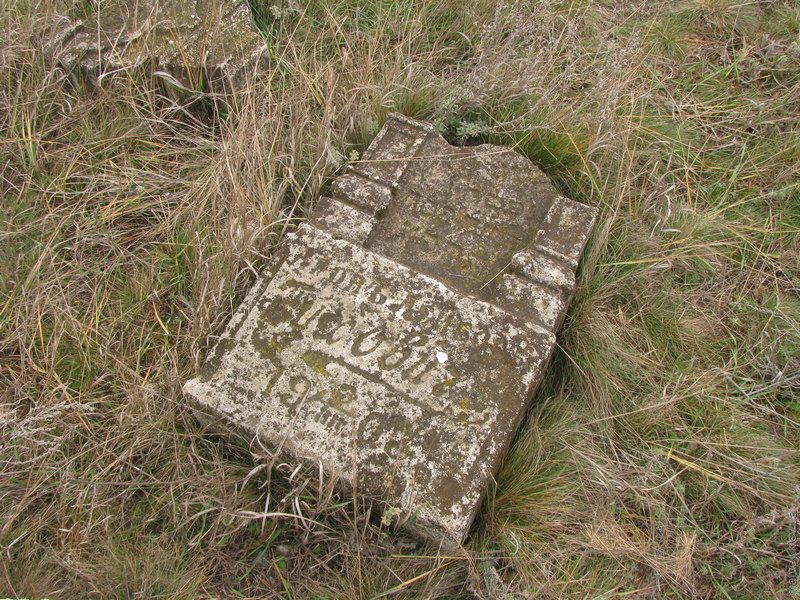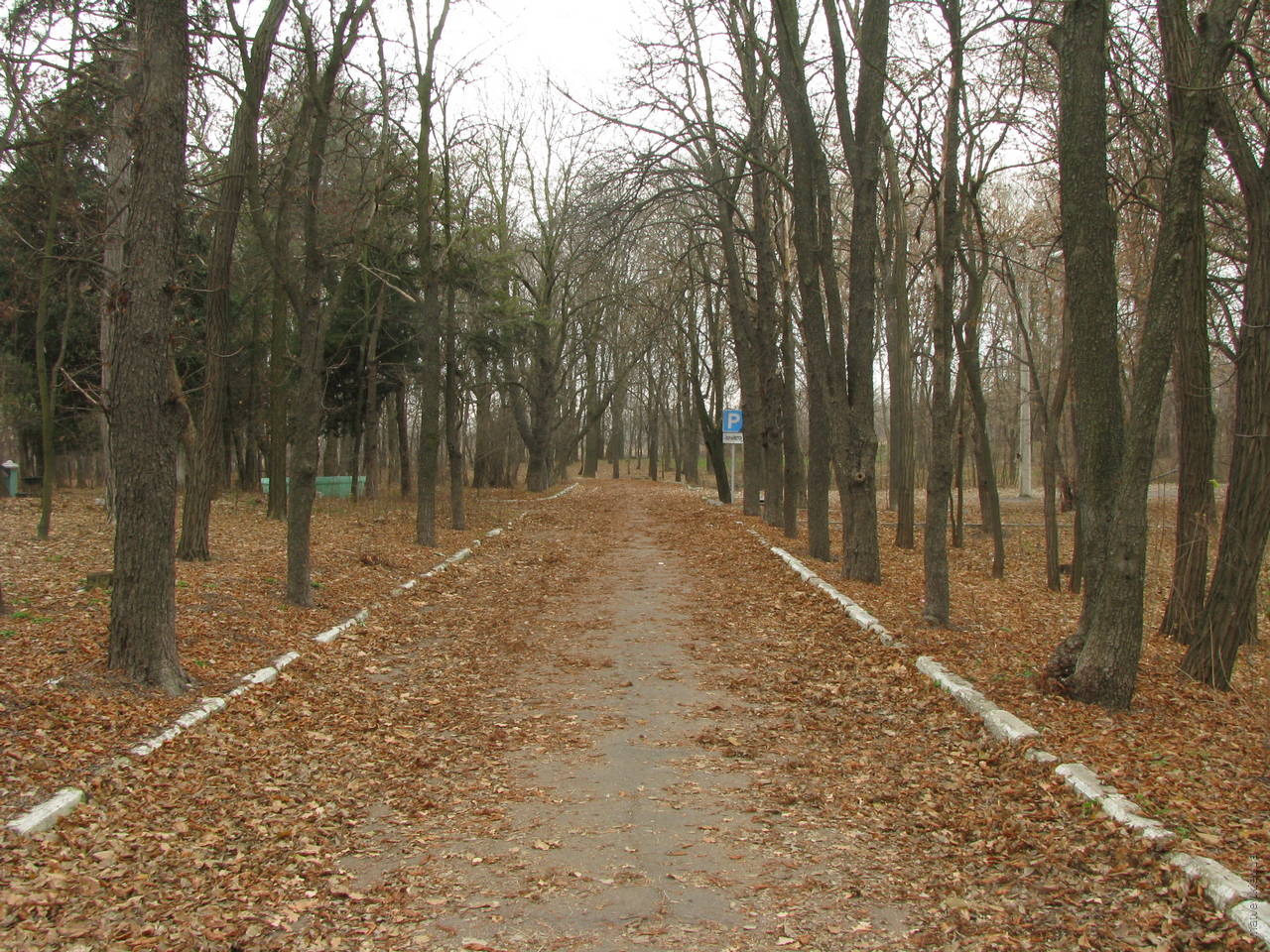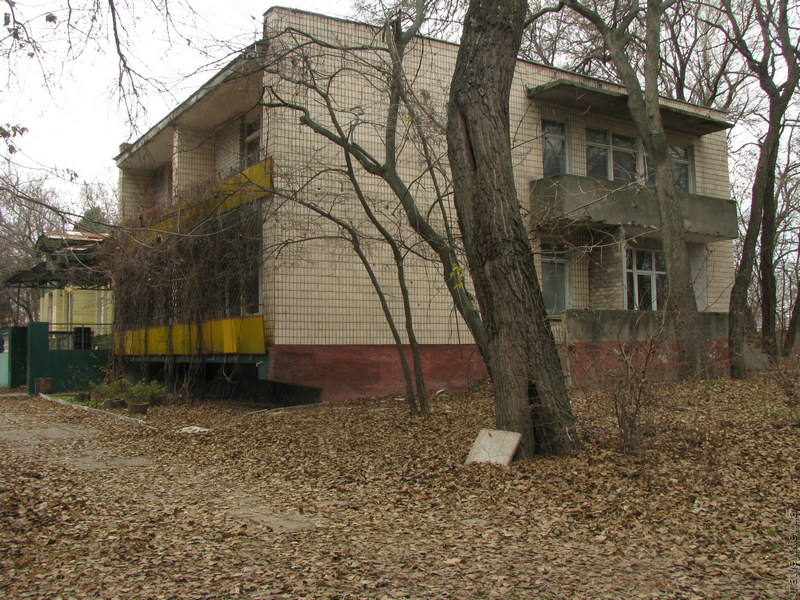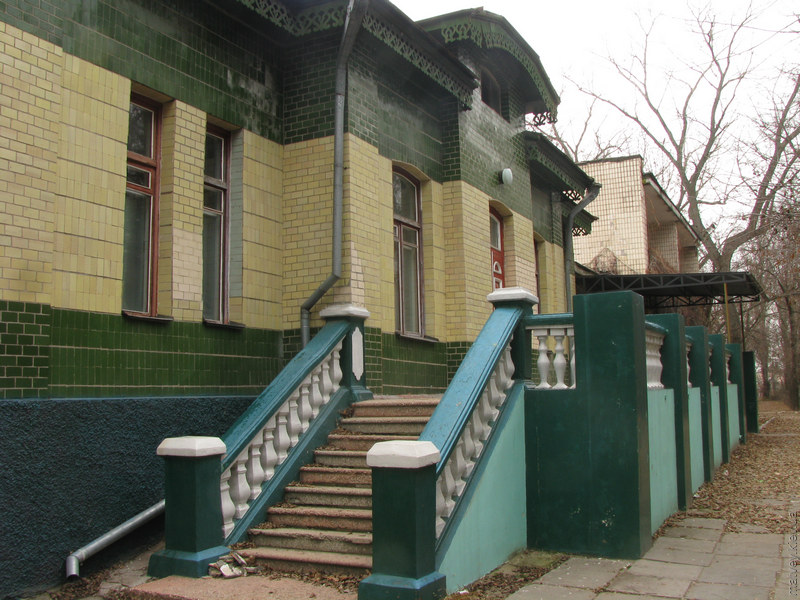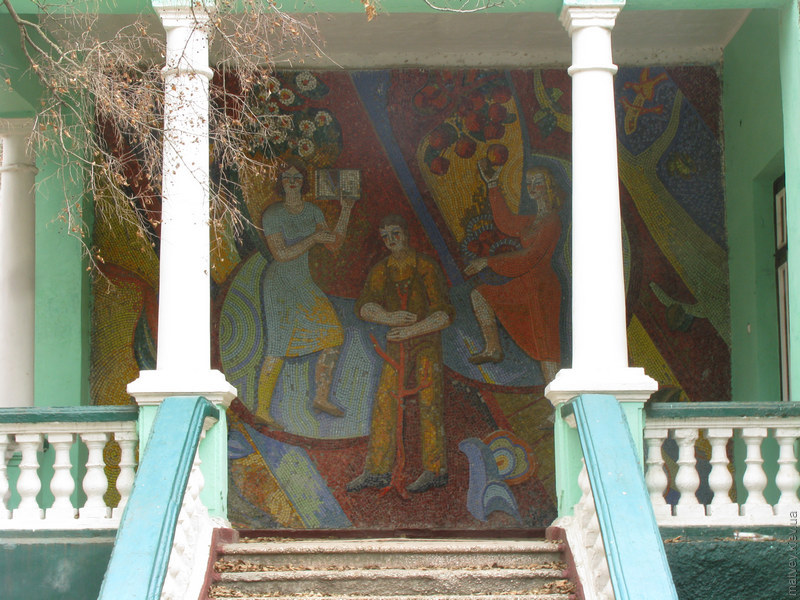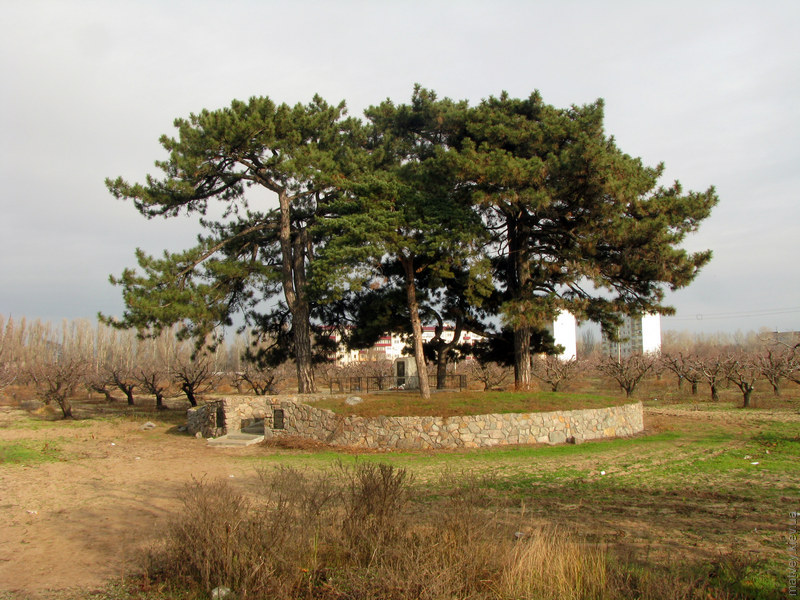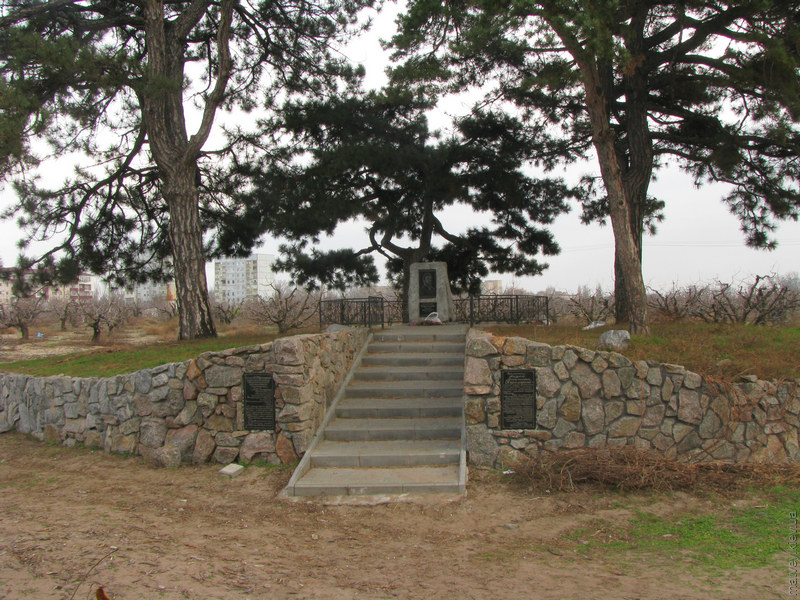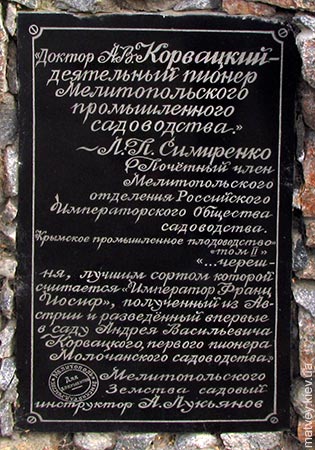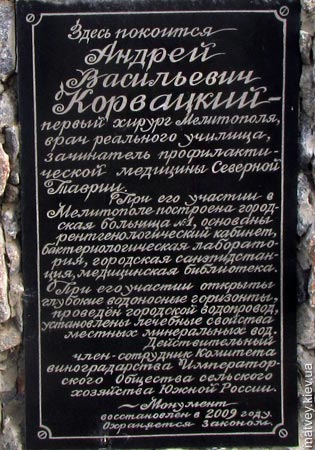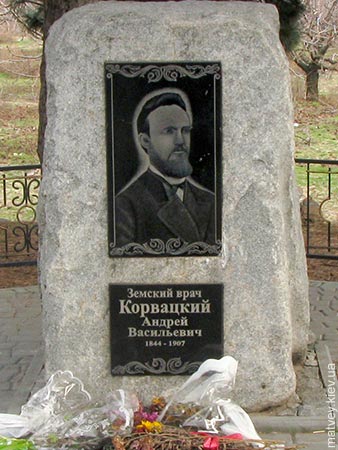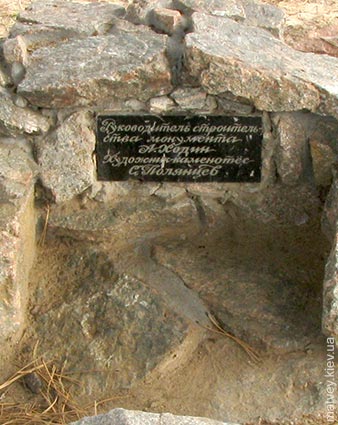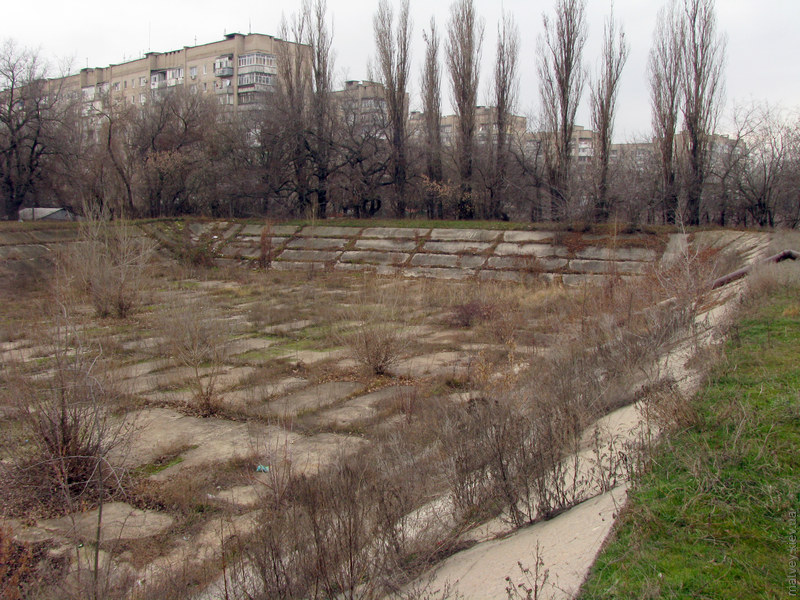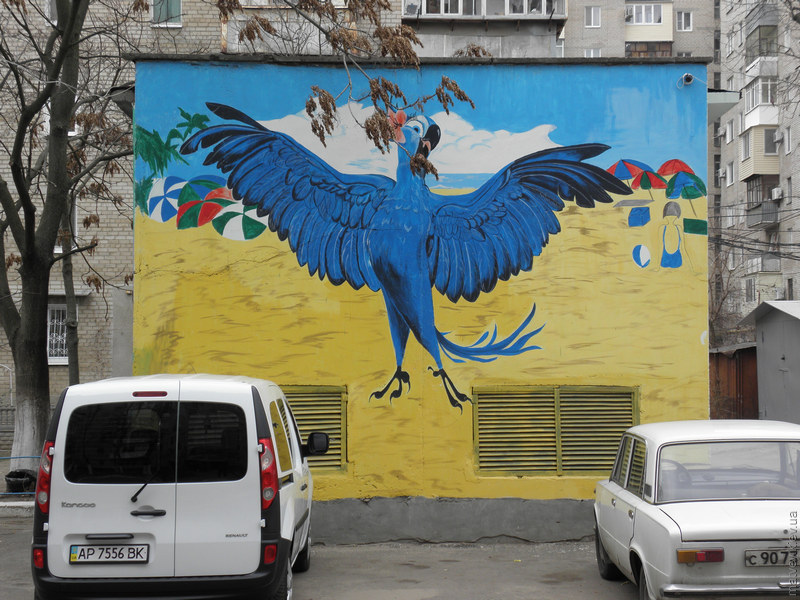This is one of the most dull and gray travel blg posts in the internet. I came to Melitopol during the winter, and made this visit even more goth by going for a walk to a cemetery. My bad, sorry.
Noticed a change on marshrutkas — they started to include route numbers. Route number 15 existed before the fall of USSR, but I'm not sure it passed the northern crossing of the railway. Some differences are acceptable, because quite a lot of time had passed.
There was an old, closed, multicultural cemetery in Chervona hirka micro-district. Quoting some observations of my father: most graves were built from metal and were oriented head west, legs east. Some others were built from concrete or stone and had their heads north, legs south — these were the karaim graves.
Some graves had inscriptions in a turk language (not Turkish), but written using cyrillic letters. Speakers of Turkish understand it, if read to them aloud.
There was a jewish section of the cemetery, unmaintained for many years. Its style differed a lot — open to the sunlight with no trees, with graves of concrete or stone, often carved to look like a tree with its branches cut.
Rumors had it that tombstones were downed by local anti-semites. It was possible, but I have never seen anyone doing so.
Melitopol has a lot of fruit gardens in various parts of town. One such garden had a small unmaintained park in its corner. A pair of footpaths and a pair of paths under deciduous trees.
An old building was standing there, to which a hotel section had been added during the soviet era.
The old building had housed a gardening museum, and a restaurant called «dacha Felibera» (or «Filibera» — nobody knows it because it had never been written anywhere). It did not house anything at the time of my visit, having suffered from a fire. It was open and not guarded.
There was a mosaic at its entrance.
A tiny hill stood in the middle of a fruit garden for as long as I remember. Four pine trees were growing on it. It turned out to be the grave of a doctor with the surname Korvatsky. I never knew it was a grave — no signs were on it whatsoever. Melitopol does not have a lot of interesting places, and this grave is now popular during wedding photosession routes. The garden sand had a lot of holes made by the high heels of brides.
Kids were using this hill to play when they were roaming in the garden. The hill had attracted them because it was a thing that stood out differed from the evenly spaced rows of peaches, apples and cherries.
The part of garden having this grave was colloquially called «Feliber's garden» in the end of the USSR. Later, people started to call it «Kovatsky's garden» for no obvious reason, with this name finally replacing the Feliber one. No one knew who or what the hell Feliber was. The gardens belong to people with other surname for a long time already.
There was another interesting place in this same garden. It was a reservoir for irrigation, filled by pumping water from underground well nearby. Colloquially called «quadrat» (meaning «square») the reservoir was not made for swimming, but people did swim here, as well as consumed alcohol. It was already abandoned by the time of this visit, because the garden had switched to another way of irrigation, disusing the reservoir. It was being actively reclaimed by nature:
The nine-storied apartment houses visible behind the trees were called «drobi» (meaning «fractions») by the locals, because their numbers looked like fractions: 36/1, 36/2 ... 36/9. The closest one on the photo is the 36/5 one.
A kindergarten-level street art on a transformer booth near one of these «fractions».
